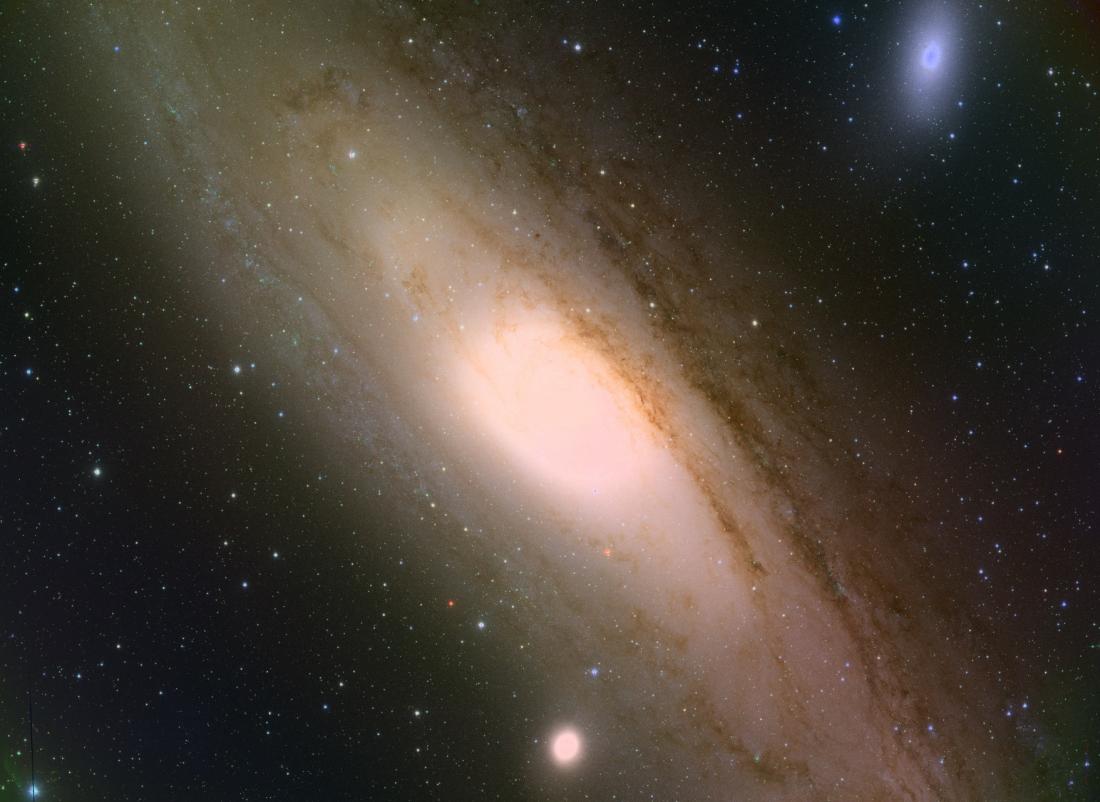“We could finally start the long-awaited, largest-ever galaxy survey for understanding the evolutionary history and fate of the expanding Universe,” says Principal Investigator Masahiro Takada of Kavli IPMU.
One night in 2013, the 870 million-pixel Hyper Suprime-Cam (HSC) captured a spectacularly clear image of the Andromeda galaxy unlike anything astronomers had seen before. The picture launched a new era of cosmological observation, enabling researchers to image billions of galaxies with incredible clarity. It was a picture, in some ways, more than a millennia in the making. Back in 964AD, Persian astronomer Abd al-Rahman al-Sufi recorded seeing a small cloud in the night sky. It was later identified as a galaxy and labelled M31. Also called the Andromeda galaxy, it is 2.5 million light years from Earth, making it the closest galaxy to our Milky Way. Today, astronomers continue to study M31 because its similar shape to our own galaxy could provide answers to how the Milky Way was born. However, breakthroughs were limited because conventional telescopes took hundreds of hours to capture sharp images of only a tiny portion of the night sky. In 2002, a group of researchers were discussing that to get bigger and better images of galaxies, they needed to design and build a powerful survey imaging camera that could be attached to the Subaru telescope, operated by the National Astronomical Observatory of Japan (NAOJ), sitting atop the 4,200-metre summit of a dormant volcano on Hawaii’s Big Island. The telescope is known for its wide field of view. It took ten years to develop the Hyper Suprime-Cam (HSC) through an international collaboration that has grown to several institutes in Japan, including the Kavli Institute for the Physics and Mathematics of the Universe (Kavli IPMU) and the NAOJ, the Academia Sinica Institute of Astronomy and Astrophysics in Taiwan, and Princeton University in the US. Measuring three metres in height and weighing three tons, the HSC was mounted onto Subaru for testing in 2012. A year later, it captured the image of the Andromeda galaxy, proving the powerful camera would allow researchers to carry out a large-scale imaging survey of millions of galaxies over a wide area of the night sky, and in sufficient depth to probe the distant universe. “We could finally start the long-awaited, largest-ever galaxy survey for understanding the evolutionary history and fate of the expanding Universe,” says Principal Investigator Masahiro Takada of Kavli IPMU, who also serves as co-chair to the HSC-Subaru Strategic Program. “The data allow scientists to map the distribution of dark matter, constrain the nature of dark energy, and search for baby galaxies that were just born in the early Universe.” After a few more adjustments, the HSC-Subaru Strategic Program officially launched in 2014 and continues today with a goal of surveying 300 nights a year over four to five years. The first public dataset containing almost 100 million galaxies and stars was released in February 2017. The images are already providing insights, including into the origins of the halo-like streams of stars surrounding some galaxies. By 2020, the currently under construction Prime Focus Spectrograph will join the HSC and Subaru Telescope, enabling astronomers to split the light from stars and galaxies into wavelengths, from which they can uncover information about the celestial object’s motion. Further information Motoko Kakubayashi | Email: [email protected] Press Office Kavli Institute for the Physics and Mathematics of the Universe ---------------------------------------------------------- Asia Research News is our annual magazine to highlight exciting research studies from our partners. 25,000 copies are printed and distributed to key figures in research. Download a PDF copy from the link below or contact us if you would like print copies.



